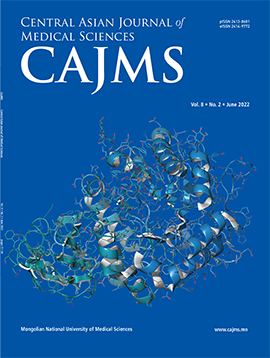Predictors of the Pedicle Screw Misplacement in Patients with Thoracolumbar Fracture
DOI:
https://doi.org/10.24079/cajms.2022.09.007Keywords:
Spine, Fracture Fixation, Pedicle Screws, Prevalence, Risk FactorAbstract
Objectives: To investigate the prevalence and risk factors of the misplacement of the pedicle screw in patients with thoracolumbar spine fracture. Methods: Patients who underwent posterior stabilization procedure due to thoracolumbar spine fracture were included. Association between potential risk factors and the misplacement of the pedicle screw were evaluated by logistic regression analysis. Results: A total of 88 consecutive patients with thoracolumbar spine fracture who underwent posterior stabilization surgery using pedicle screws and rods (mean age 43 ± 14, male 52.3 %). On post-operation CT evaluation, 98 (14.8 %) pedicle screws were misplaced (34 thoracic screws and 64 lumbar screws) and the prevalence of the misplaced pedicle screw was not significantly different between thoracic and lumbar screws (13.2 % vs. 15.8 %, p = 0.347). Among risk factors including location of spine fracture, multiple spine fracture and location of screws, the AO classification of spine fracture was significantly associated with the misplacement of the pedicle screw (OR = 1.27, 95 % CI 1.06 - 1.53, p = 0.011). Conclusion: High grade spine fracture, as assessed by the AO classification, was significantly associated with pedicle screw misplacement in patients with thoracolumbar spine fracture.
Downloads
247
Downloads
Published
How to Cite
Issue
Section
License
Copyright (c) 2022 Mongolian National University of Medical Sciences

This work is licensed under a Creative Commons Attribution-NonCommercial 4.0 International License.




